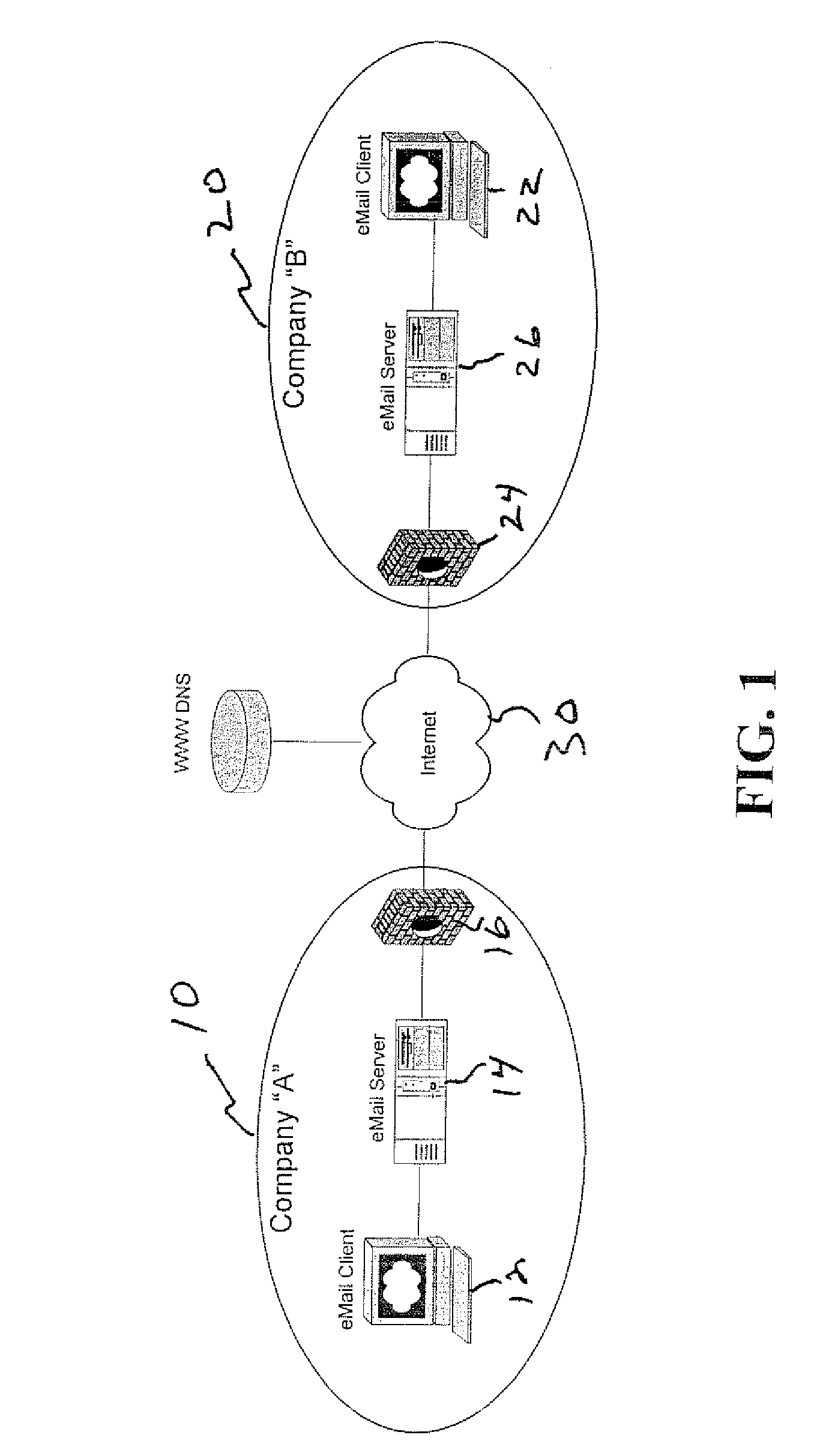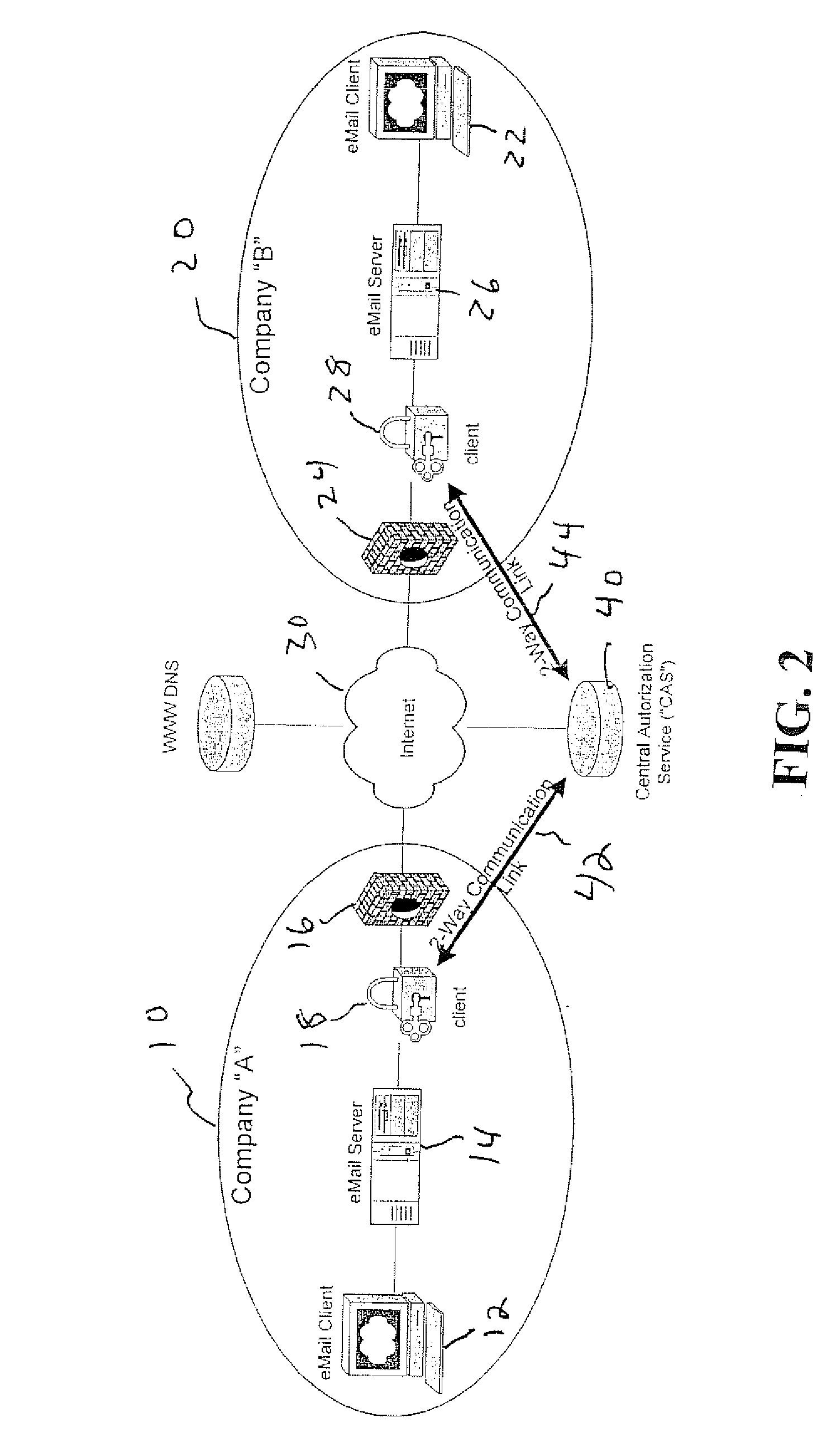System and methods for reduction of unwanted electronic correspondence
a technology of electronic correspondence and system, applied in the field of electronic correspondence, can solve problems such as large amount of unsolicited and illegitimate e-mail, problems for users of such correspondence, and abuse of users of e-mail and other electronic corresponden
- Summary
- Abstract
- Description
- Claims
- Application Information
AI Technical Summary
Benefits of technology
Problems solved by technology
Method used
Image
Examples
Embodiment Construction
[0018]The present invention will be described with reference to the figures.
[0019]FIG. 1 illustrates a conventional configuration for implementing electronic correspondence between two entities. As illustrated therein, a plurality of entities 10, 20 (two are illustrated in FIG. 1) are connected by the Internet 30. Correspondence is sent by a sender 12 over the Internet 30 for receipt by a recipient 22. Upon receipt, the correspondence is first routed through a firewall 24, then is received in an e-mail or electronic correspondence server 26, which further routes the correspondence to an e-mail client 22 or user interface for viewing by the user. Conversely, when e-mail is to be sent from the e-mail client 22, an IP address is obtained and the message is sent out through the firewall 24 to the respective companies e-mail server 14 which is then available for ultimate delivery when the recipient connects via their e-mail client. Prior to reception of the e-mail, the e-mail server pref...
PUM
 Login to View More
Login to View More Abstract
Description
Claims
Application Information
 Login to View More
Login to View More - R&D
- Intellectual Property
- Life Sciences
- Materials
- Tech Scout
- Unparalleled Data Quality
- Higher Quality Content
- 60% Fewer Hallucinations
Browse by: Latest US Patents, China's latest patents, Technical Efficacy Thesaurus, Application Domain, Technology Topic, Popular Technical Reports.
© 2025 PatSnap. All rights reserved.Legal|Privacy policy|Modern Slavery Act Transparency Statement|Sitemap|About US| Contact US: help@patsnap.com



